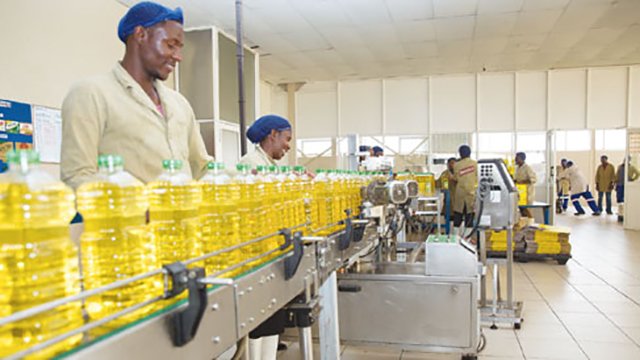Christopher Mahove
Zimbabwe’s food manufacturing sector sources 70% of its input components from foreign markets despite the country’s economy being agro-based.
Confederation of Zimbabwe Industries chief economist, Cornelius Dube said the country’s economy had lost its downstream value chain dependency and most sectors were now looking at foreign markets. This he said was now causing unnecessarily high demand for foreign currency.
“Just because this sector is highly import dependent, we see that it is consuming more foreign currency than it is generating. What we can see is that the total amount generated by the manufacturing sector was enough only to be able to buy 20% of the raw materials that are needed by the industry,” he said.
He said despite that six of most important sectors in the manufacturing industry have been trending upwards since 2015, it was worrying that they were still using 90% of raw materials procured from foreign sources.
“What we are saying is that these sub sectors, motor manufacturing, transport and equipment and even the chemical industry; if you want to improve or increase their output, that means you will have to make foreign currency available for them because almost 90% of the products that are used in those sectors are from foreign sources,” he said.
He said high dependency on foreign raw materials had been the cause of frosty relations between the manufacturing sector and the mining industry, which was generating more foreign currency
Dube said the manufacturing sector was the second most important sector in the economy and the process with which it got foreign currency should ideally not raise any concern but it was being hampered by distortions in the foreign market.
“The point that we want to make is that the current structure of the manufacturing sector is difficult to maintain because there are so many factors that are need to ensure that it is sustainable. We are going to see the manufacturing sector struggling if other sectors that generate foreign currency struggle,” he said.
“The current structure of the manufacturing structure is not ideal for an upper middle income economy, adding the industry needed to focus on where they got their raw materials.
Dube said transforming the economy required a vibrant manufacturing sector regardless of the fact that the country’s economy was agro-based and had a strong mining sector.
The current economy is largely dependent on wholesale and retail trade for Gross Domestic Product contributions and it is worrying that most of the products that are being retailed or wholesaled are imported.
The CZI second quarter business and economic intelligence report projects capacity utilisation in the manufacturing industry to grow to 61% by end of 2021 from the projected 58% in the third quarter.
The upward trend was attributed to improved access to foreign currency and the improvement in output in the agriculture sector.



















